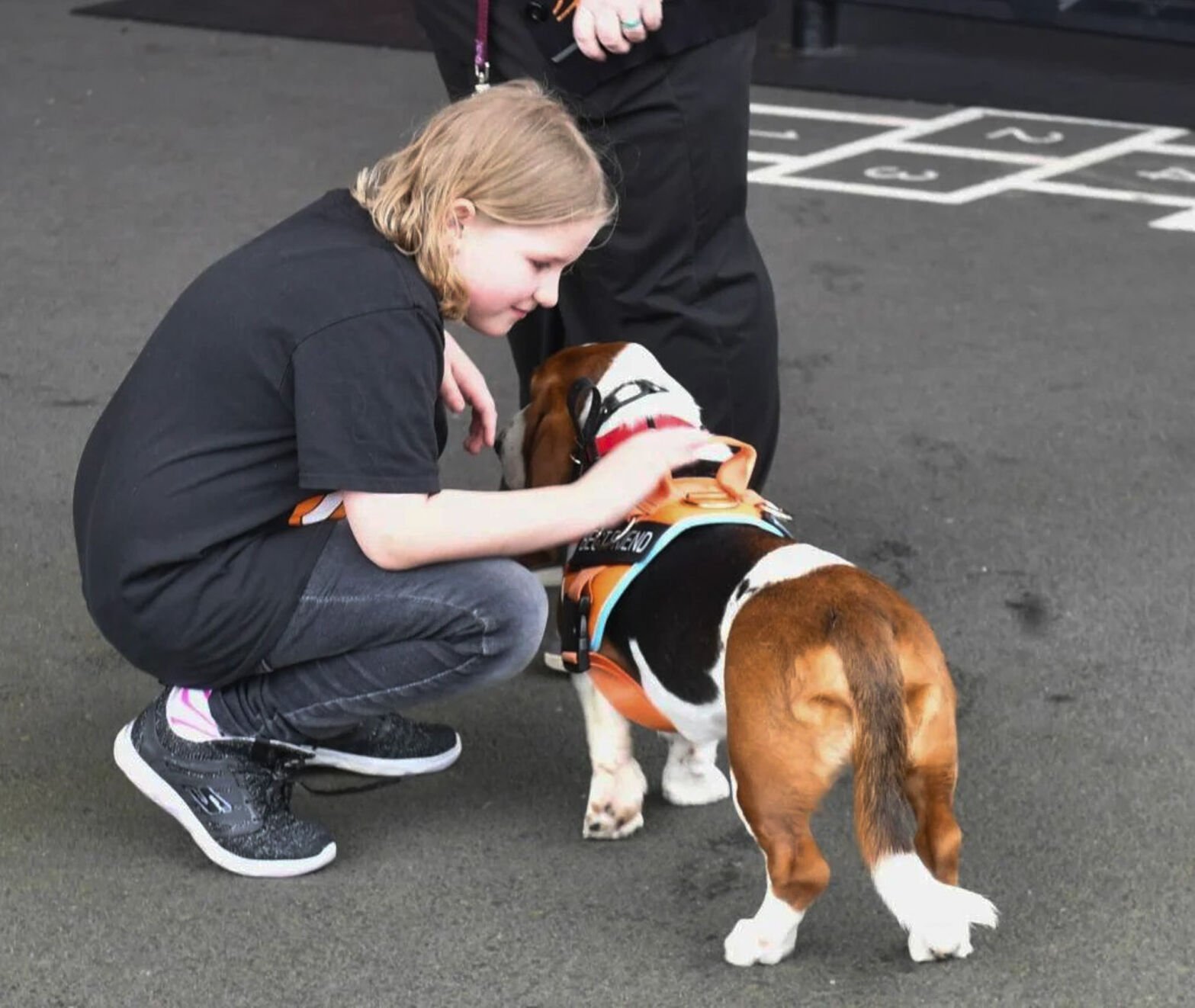At Kalama Elementary School, a special four-legged friend named Walter is making a significant difference in students’ lives. As mental health concerns rise among youth, this gentle basset hound provides comfort, reduces stress, and helps students navigate their emotional challenges.
Reports show anxiety, depression up among Cowlitz County youth. Here’s how 1 school district’s therapy dog helps.

Key Takeaways:
-
Therapy Dog Supports Student Well-being: Walter aids students dealing with trauma, anxiety, and depression by offering comfort and companionship.
-
Rising Mental Health Concerns in Schools: There’s a noted increase in anxiety and depression among students both locally and nationally.
-
Innovative Approach to Emotional Support: The school’s use of a therapy dog represents a creative method to address and manage students’ mental health needs.
-
Positive Influence on Behavior: Walter helps de-escalate tense situations and calms students who are acting out, facilitating better communication.
-
Early Intervention Benefits: Introducing supportive measures at the elementary level proves crucial in helping children cope with emotional difficulties.
A Basset Hound’s Healing Touch
The Unconventional Support System
When students at Kalama Elementary School are having a tough day, they know they can turn to Walter. This three-year-old basset hound isn’t just the school’s mascot; he’s their therapy dog, offering a comforting presence to those who need it most. Whether walking a hesitant child to class or diffusing a tense situation, Walter plays a vital role in the daily lives of the students.
“When there’s a dog in the building, it just helps everyone’s cortisol levels and stress levels go down,” the principal remarked. Walter’s calming influence is especially significant in an era where students face increasing mental health challenges.
Increasing Mental Health Challenges Among Youth
Statistics paint a concerning picture. According to the National Center for Education Statistics, 69% of public schools reported a rise in mental health concerns among students in April 2022. The state Healthy Youth Survey revealed that in 2023, approximately 54% of eighth graders statewide and in Cowlitz County felt anxious or on edge several days each week, with 27% experiencing feelings of depression. Feelings of hopelessness have also surged, with 15% of eighth graders in Cowlitz County reporting little or no hope for the future, more than double the figure from 2018.
These numbers underscore the importance of innovative solutions to support student well-being.
Walter’s Multifaceted Role
Walter’s duties extend beyond mere companionship. For students meeting with the school counselor or therapist, he provides a soothing presence as they navigate difficult conversations. Some children find it easier to open up to Walter, discussing their problems while a staff member is present.
“He can quickly help a child who is in distress by being in their proximity,” the school therapist noted. “He lets the child know he is there for them and understands they are having a hard time but expects nothing from them.”
In moments when students are acting out physically, Walter intervenes by simply being there. The principal shared, “He can snuggle right up next to them while they’re having their moments, and you just take a couple minutes and by golly, they’re just sitting there petting him. They just calm down, and then they can start talking about it.”
Students’ Interactions with Walter
Beyond crises, Walter roams the school, spreading joy among students and staff alike. Children can walk with him to class for extra support or take short breaks during the day to pet and brush him, helping them regulate their emotions. As a reward for good behavior, some earn special “Walter time.”
The excitement he brings is palpable. Students often greet Walter enthusiastically, sometimes forgetting to acknowledge the staff member accompanying him. A simple, “Walter says hi,” can make their day.
One student mentioned how she enjoys giving Walter belly rubs and helping him dress up for special occasions. His presence has a noticeable impact on her mood, helping her calm down when she’s feeling upset.
Training and Certification
Walter’s journey to becoming a certified therapy dog began when he was just eight weeks old. Selected for his suitable temperament, he started visiting the school early to acclimate to the environment. Despite some initial challenges due to his breed’s stubborn nature, Walter achieved his Canine Good Citizen certification after a year of dedicated training.
“Basset hounds are very stubborn, so it took us a little longer to get that for him,” the principal explained. His training ensures he behaves appropriately in various situations, from handling loud noises to interacting with individuals who might be hesitant around dogs.
Broader Implications
The success of Walter’s integration into Kalama Elementary highlights the potential benefits of similar programs in other schools. Providing students with unconventional support systems like therapy dogs can be a valuable tool in addressing the mental health crisis among youth.
The principal believes that external stressors significantly impact children. “Things are really tough in the world, and it’s really tough on parents… and kids pick up on so many of those stressors,” she said. Innovative approaches are essential to help students navigate these challenges.
Conclusion: A Beacon of Hope
Walter may be an unlikely hero, but his impact is undeniable. In a time when many young students feel overwhelmed, his calming presence offers comfort and hope. Kalama Elementary’s experience demonstrates the profound difference one dog can make, not just in easing stress but in fostering a supportive community where students feel seen and understood.











